Noggin volunteers and members of the Neuroscience and Psychology Clubs from Portland State University beelined to the historic art and beer-saturated McMenamin’s Edgefield Hotel last Friday to join the annual Society for Neuroscience Oregon/Southwest Washington Chapter meeting at the mouth of the Columbia River Gorge…
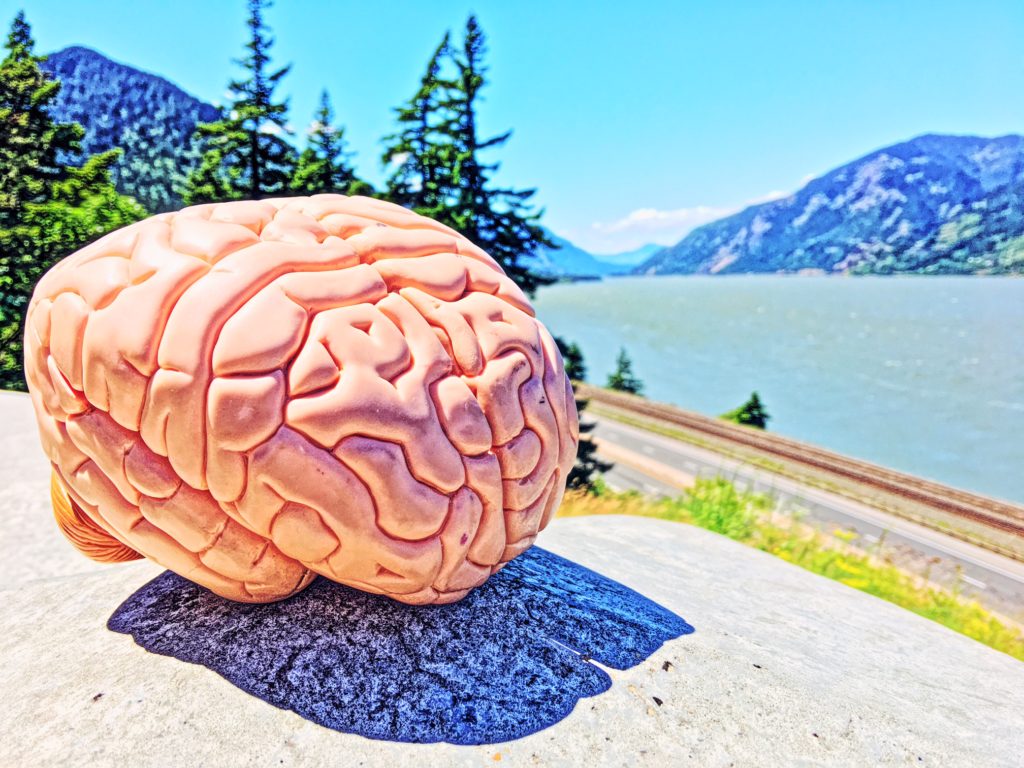
It was a mossier, wetter morning than depicted above for delving into a fascinating day of talks on the advancing neuroscience of neuropsychiatric disorders…
LEARN MORE: Who presented at the Oregon/Southwest Washington SfN Chapter meeting?



We nourished our neurons – or at least elevated the firing rate of many – with cups of caffeine, and wheeled our new Noggin brain cart into the ancient elevator to bring legit cerebrums to the converted “Poor Farm’s” second floor…
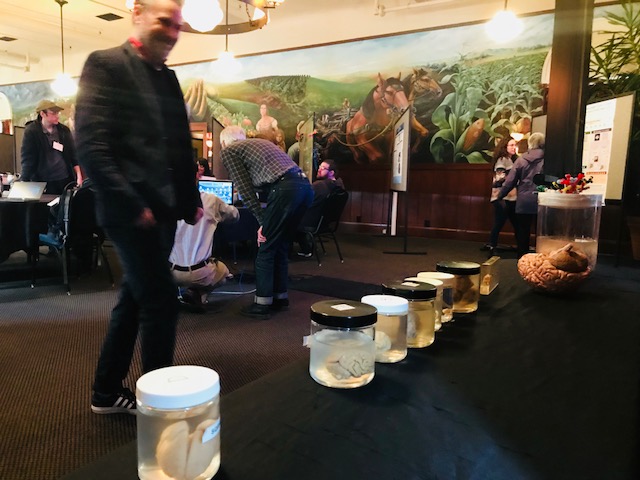
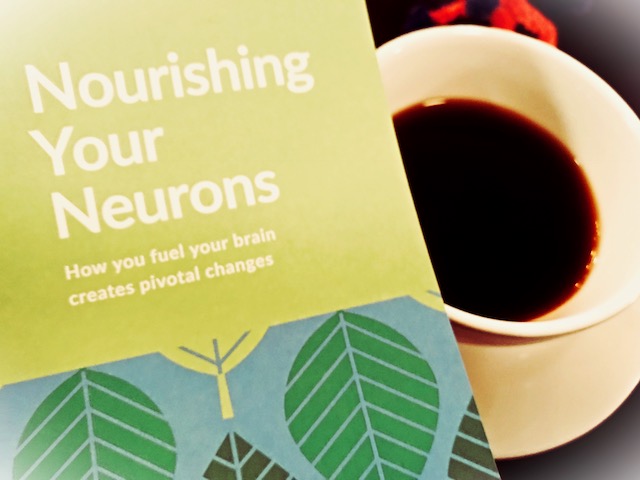
This was an appropriate venue for the topic at hand. “At Edgefield, during its seven-decade run as a poor farm, a remarkable array of personalities congregated under its roof: sea captains, captains of industry, school teachers, ministers, musicians, loggers, nurses, home builders, homemakers, former slaves…The one common thread among them was, at one time (and perhaps others) in their lives, each needed a ‘leg up.'”
LEARN MORE: Edgefield History
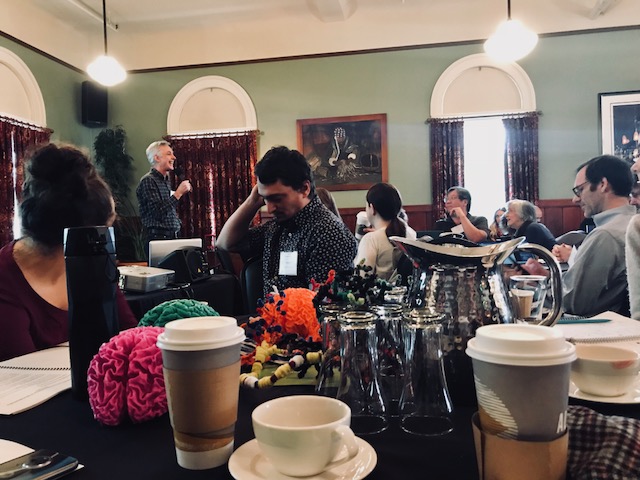
“There is hope, even when your brain tells you there isn’t.”
― John Green, Turtles All the Way Down
Robert Duvoison of OHSU kicked off the proceedings, introducing Bita Moghaddam, the Chair of Behavioral Neuroscience on Pill Hill. “We treat complex illnesses with drugs discovered accidentally in the 1950s,” said Dr. Moghaddam. “We ‘dumbify’ these illnesses. For example,” she noted, “with cold medicines, we take a mix of chemicals, each addressing a particular symptom. But for complex mental disorders like schizophrenia, why would we still expect to treat the entire condition with just one drug?”
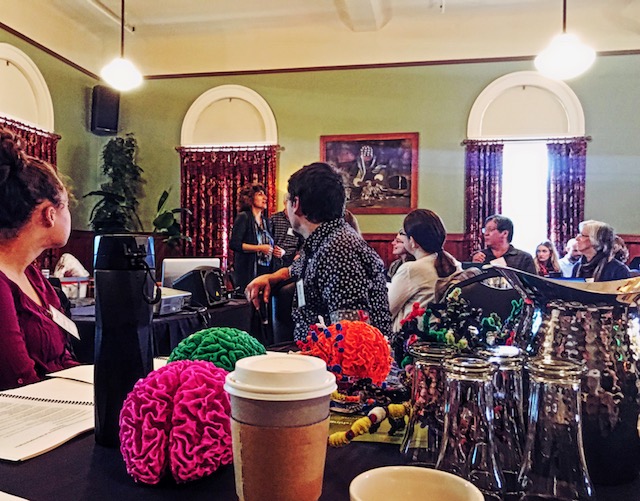
“We need to focus on the symptoms associated with multiple disorders, for example, the biology of a lack of motivation, the biology of anxiety. Basic research on the symptoms associated with various psychiatric illnesses might prove more useful and effective in the end.”
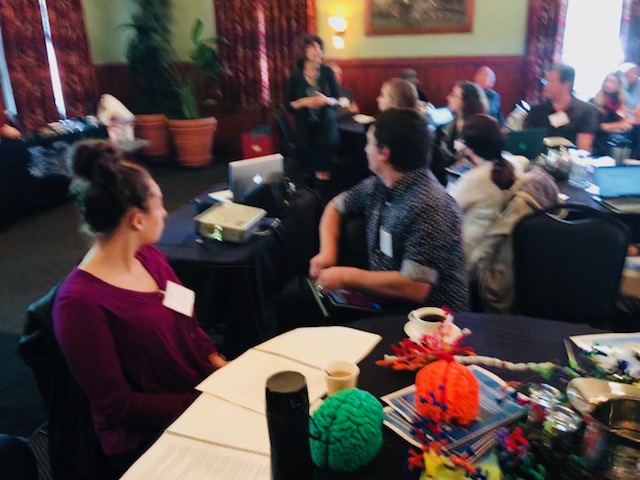
LEARN MORE: Different Approaches to Understanding and Classifying Mental Disorders
Bita studies anxiety, a symptom associated with many neuropsychiatric conditions, including schizophrenia, ADHD, bipolar disorder, panic disorder and depression. Anxiety disorders are the most common mental health concerns, and better treatments could help millions, including those without specific DSM-V diagnoses; e.g., cancer patients concerned about their prognosis.

LEARN MORE: Anxiety Disorders
LEARN MORE: Prevalence of depression and anxiety among cancer patients
Many sufferers are still prescribed benzodiazepines, added Bita, even though “these are terrible drugs,” with often severe cognitive side effects. They also potentially increase the risk of dementia, though this is under vigorous debate.

LEARN MORE: Treatment of anxiety disorders
LEARN MORE: Side effects of treatment with benzodiazepines
LEARN MORE: Current Diagnosis and Treatment of Anxiety Disorders
LEARN MORE: Association between Benzodiazepine Use and Dementia
LEARN MORE: Benzodiazepine use and risk of incident dementia or cognitive decline
Bita is interested in background anxiety – not the acute anxiety in response to a specific event, like an important exam that stresses you out. Most people experience this form of anxiety, which may help them prepare and meet an anticipated challenge. Some, however, may show up for the exam, but find the anxiety debilitating, and some may find it so debilitating that they don’t show up at all…
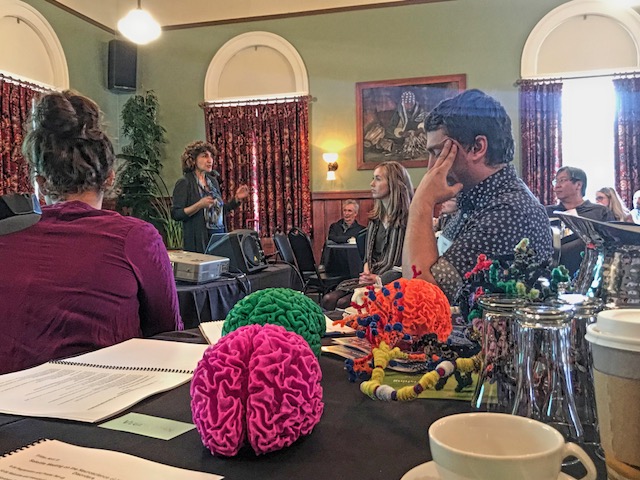
Dr. Moghaddam designed an experiment that introduced a background state of anxiety but still allowed rats to complete a task (much like you showing up for that exam). “Behavior involves discrete steps, each controlled by different brain systems,” she noted. “Which brain systems,” she asked, “are more impacted by anxiety..?”
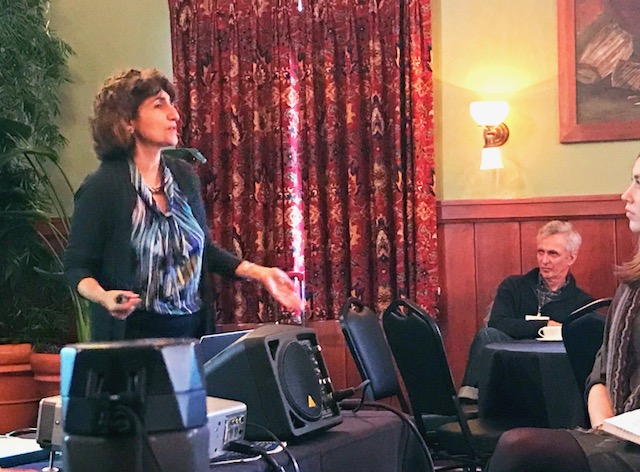
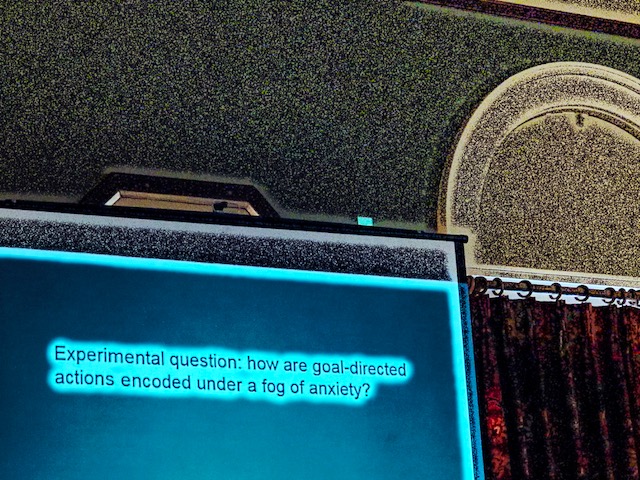
Anxiety, Dr. Moghaddam emphasized, is not the same as fear. “If a mountain lion jumps at you, that’s fear,” she explained. “However, if I’m driving to the Edgefield and NPR is reporting on mountain lion sightings in Troutdale, I’ll start thinking about mountain lions.” Fear relates to a concrete event that is occurring, or is certain to occur, while anxiety is evoked when potential harm may occur but the probability is low or uncertain…


LEARN MORE: Officials investigate cougar sighting in Troutdale
Bita set up a simple cue-action-reward paradigm, where a light meant that poking your rodent nose in a hole would get you food. She then introduced various levels of harm probability (a mild electric shock).
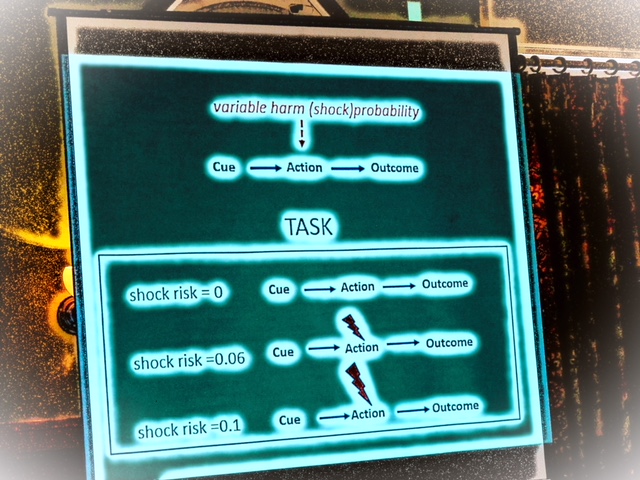
When there is no probability of getting zapped, the rats quickly poke and retrieve the food. When they get a signal of potential shock, however, they hesitate. Most animals do complete the task (just like you show up for that exam) – but more tentatively, and the reaction times are more variable, consistent with anxiety. However, once food is delivered, all the rats retrieve the reward quickly, regardless of whether they experienced risk. And anti-anxiety drugs restore faster response times in the “action” (nose poke) phase, regardless of the probability of harm.

Anxiety in real life, of course, impacts decision making, and brain networks in the prefrontal cortex (PFC) are directly involved. It’s difficult for those suffering debilitating anxiety to change strategies, and maintain goal-directed behavior. Bita used electrophysiological techniques to examine the activity of PFC neurons and also that of neurons in a subcortical nucleus called the VTA, which fire and release the neurotransmitter dopamine in the PFC in response to stimuli predicting the delivery of a reward.

Image Source: Dopaminergic reward system: a short integrative review
LEARN MORE: Impact of anxiety on prefrontal cortex encoding of cognitive flexibility

Under conditions of anxiety, neurons in both the PFC and the VTA change how they respond. There is less activity in the VTA, indicating less reward value of stimuli associated with the task. These VTA changes appear to drive the PFC changes, and this effect is observed during the action phase of the experiment, not the reward retrieval phase…
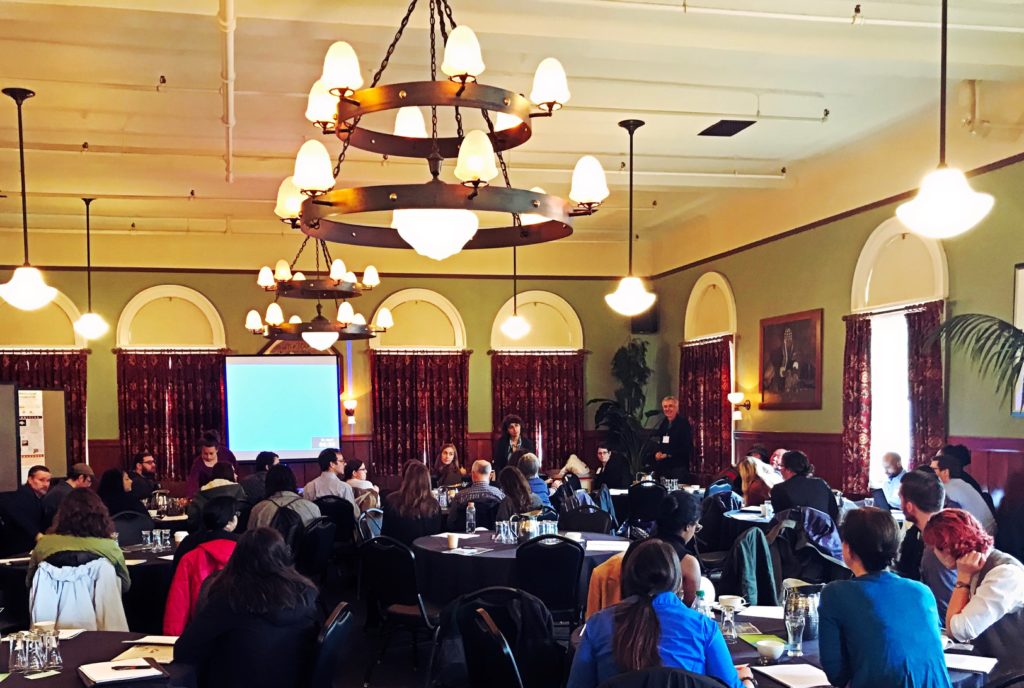
LEARN MORE: Anxiety Evokes Hypofrontality and Disrupts Rule-Relevant Encoding by Dorsomedial Prefrontal Cortex Neurons
LEARN MORE: Impact of anxiety on prefrontal cortex encoding of cognitive flexibility
From Dr. Moghaddam: “The prefrontal cortex under mild anxiety may be freeing itself from subcortical control. Those dopamine cells are pretty bossy!” So perhaps, she suggested, this is a positive change, allowing greater flexibility by the PFC in those animals able to complete the task. They are avoiding pure drive responses, and calibrating behaviors depending on the probability of a shock, or a mountain lion at Edgefield.
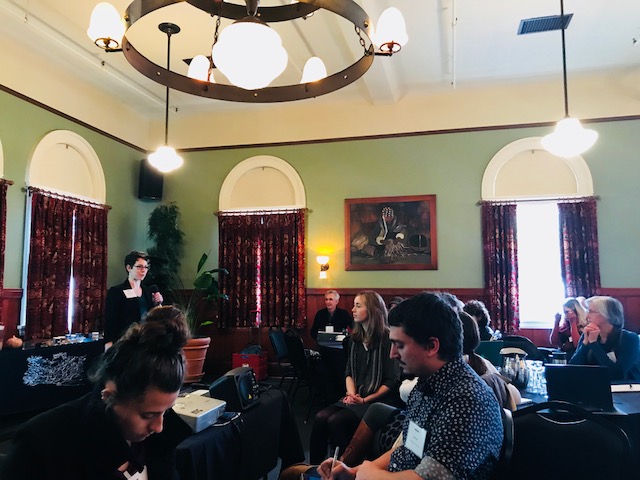
And what disrupts this relationship? Social stress and problems with sleep. Multiple speakers spoke to the links between impaired neurophysiological systems and mental health disorders, including Melynda Casement at the University of Oregon who recently established the only sleep laboratory in the state…
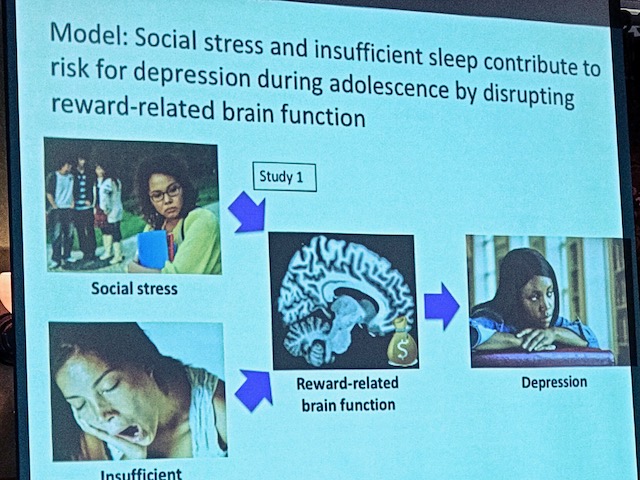
LEARN MORE: Neural Reward Processing Mediates the Relationship between Insomnia Symptoms and Depression in Adolescence

Abraham Palmer from UC San Diego also spoke on some unexpected genetic contributions to alcohol consumption, suggestive of potential new therapeutic interventions for alcohol use disorder…
LEARN MORE: Genetic and pharmacological manipulation of glyoxalase 1 regulates voluntary ethanol consumption in mice


“Parkinson’s disease is a dementing illness with a motor prodrome” – Joe Quinn from OHSU presenting on Parkinson’s, Alzheimer’s and Capgras syndrome
LEARN MORE: Parkinson Disease and Dementia

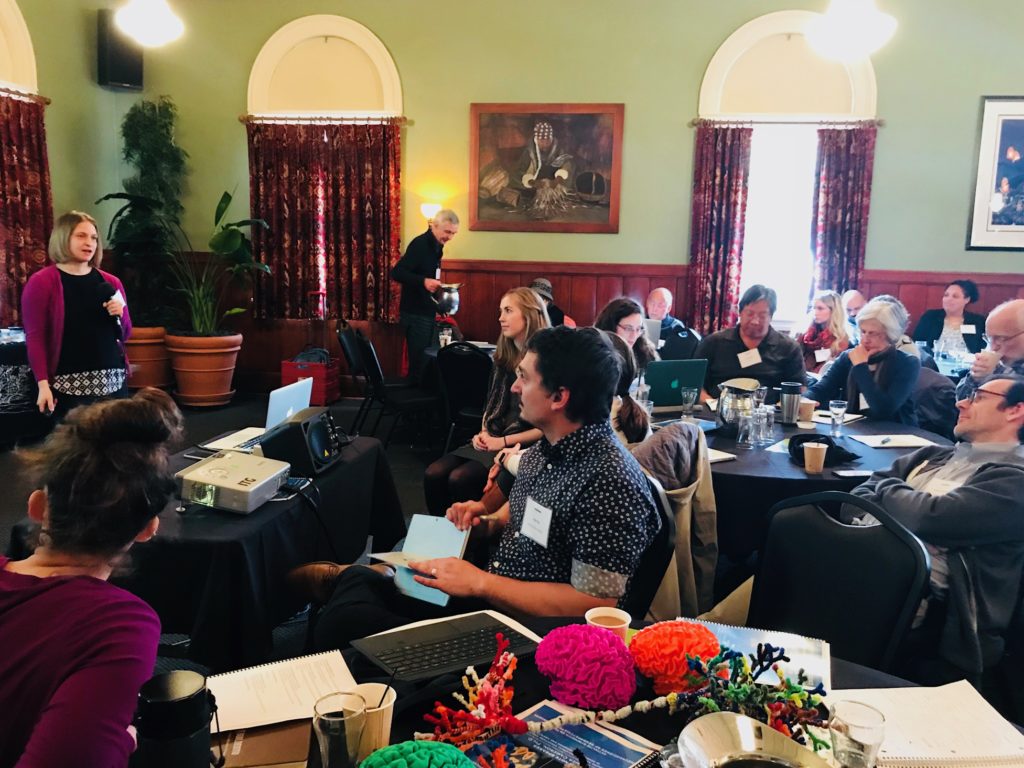
Sarah Karalunas from OHSU presenting on ADHD
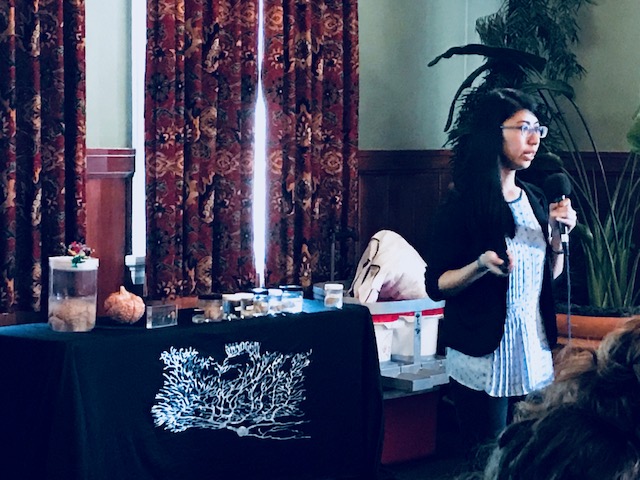
Eileen Torres from OHSU Behavioral Neuroscience presenting on genes, diet and stress
LEARN MORE: Apolipoprotein E4 and Insulin Resistance Interact to Impair Cognition and Alter the Epigenome and Metabolome
LEARN MORE: Feeling stressed?
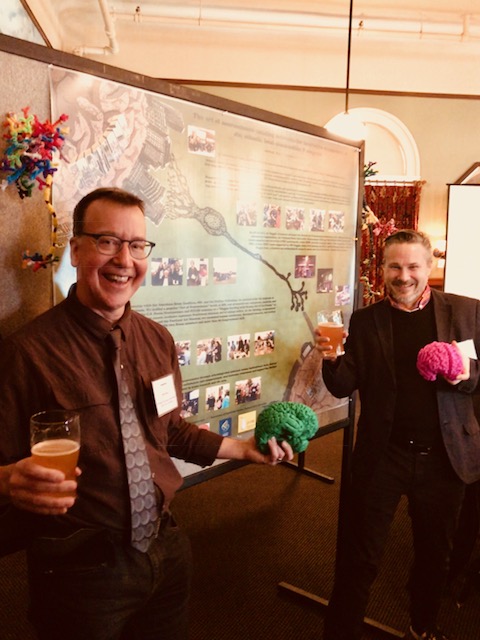
In the afternoon we relieved any residual stress ourselves by enjoying research posters, dinner and McMenamin’s brews!

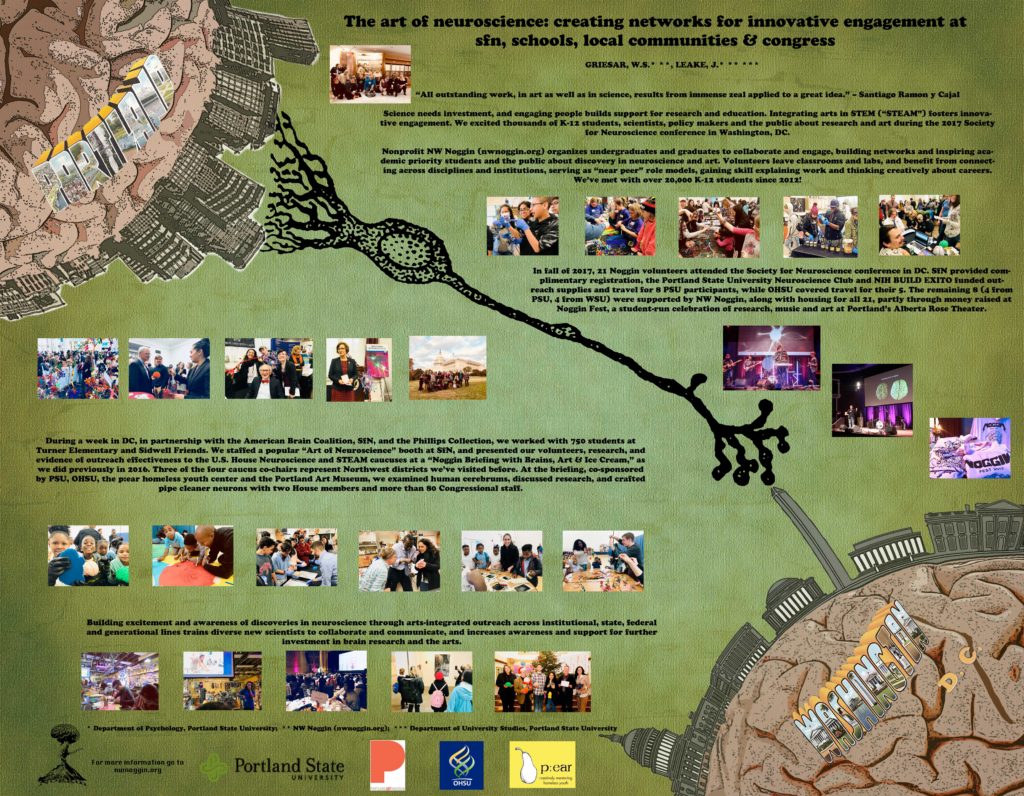
POSTER (pdf): NW Noggin SfN Chapter meeting 2018
We presented a new Noggin poster covering our recent arts-integrated outreach efforts at the Society for Neuroscience conference in Washington DC…
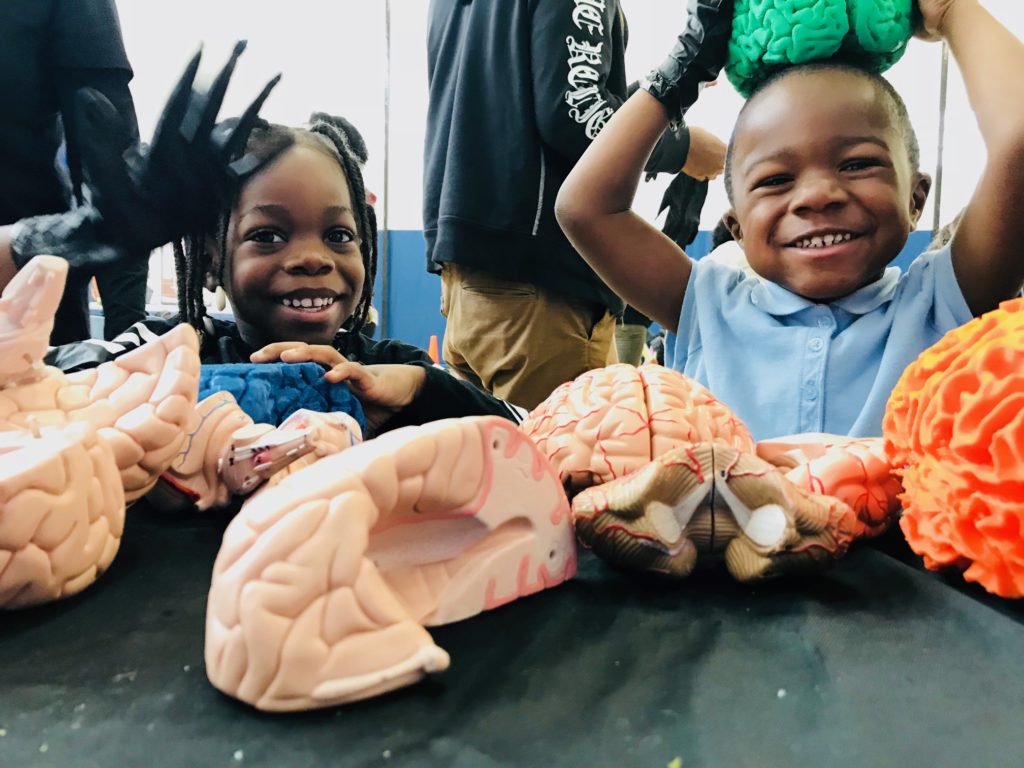
LEARN MORE: From classrooms to Congress!
And the Psychology Club at Portland State University presented their poster too…
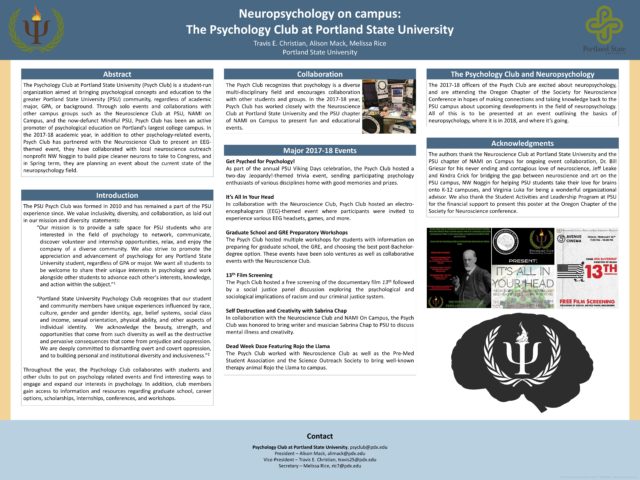
POSTER (pdf): PSU Psychology Club SfN Oregon

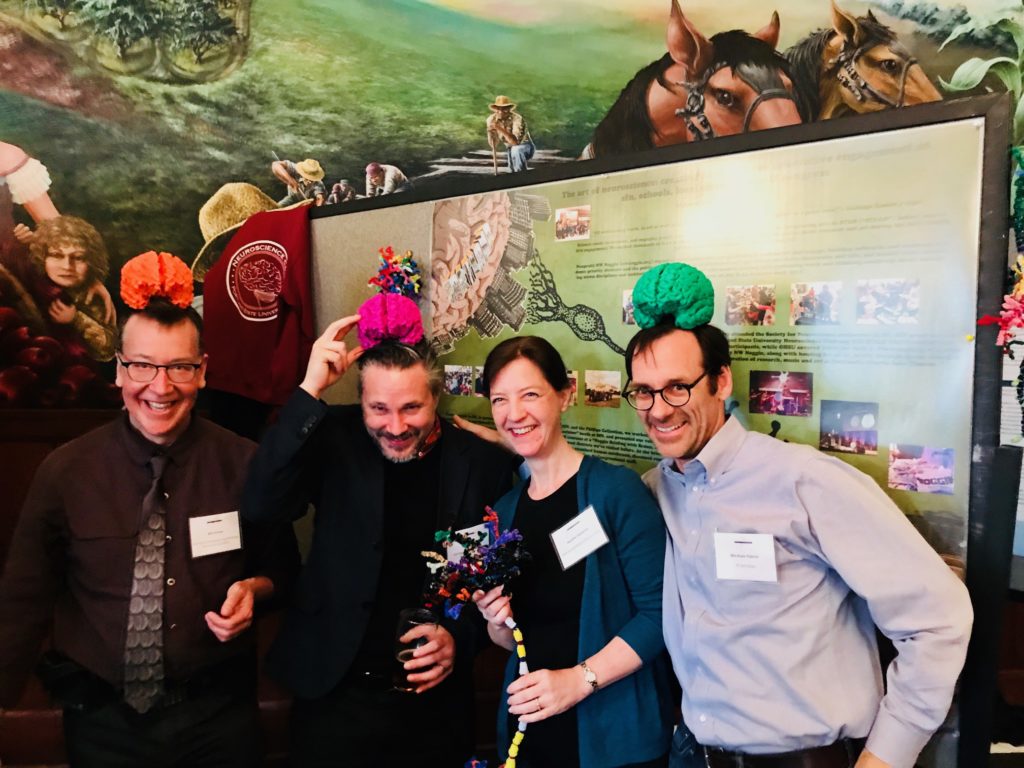
And after dinner, we discovered how the generation of new neurons (neurogenesis) can change both the structure and function of the hippocampus in rodent models of stress and anxiety from Dr. Heather Cameron, the Chief of the Section on Neuroplasticity at the National Institutes of Mental Health.
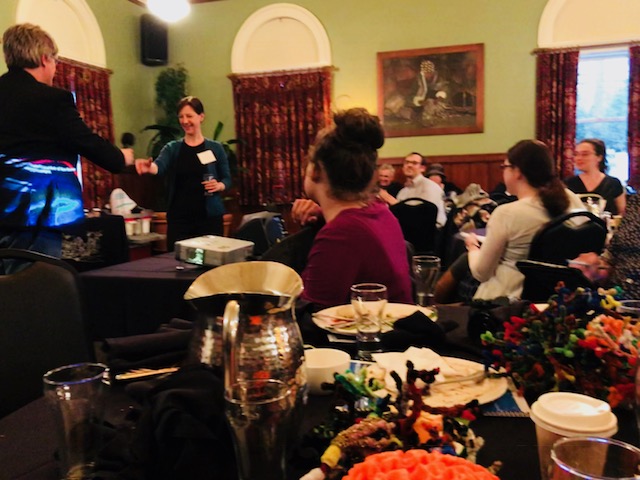
We often tell student and public audiences that exercise and exploratory activity – taking new routes to school or work, visiting different neighborhoods, cities, or places – can increase the number of neurons in the hippocampus, potentially improving aspects of memory and mental health…
LEARN MORE: Voluntary exercise increases adult hippocampal neurogenesis in mice
LEARN MORE: Intense Exercise Promotes Adult Hippocampal Neurogenesis
LEARN MORE: Exercise becomes brain: sustained aerobic exercise enhances hippocampal neurogenesis
LEARN MORE: Navigation-related structural change in the hippocampi of taxi drivers
LEARN MORE: Increasing Adult Hippocampal Neurogenesis is Sufficient to Reduce Anxiety and Depression-Like Behaviors
However, Dr. Cameron began by addressing the latest controversy surrounding hippocampal neurogenesis – does it continue in the the hippocampus in human adults, as it clearly does in rodents? A recent highly publicized paper argued that, in people, no new neurons were formed in the dentate gyrus (DG) region of the hippocampus after age 13…

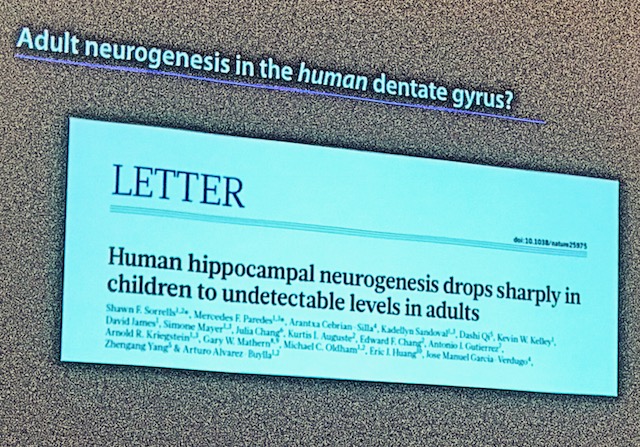
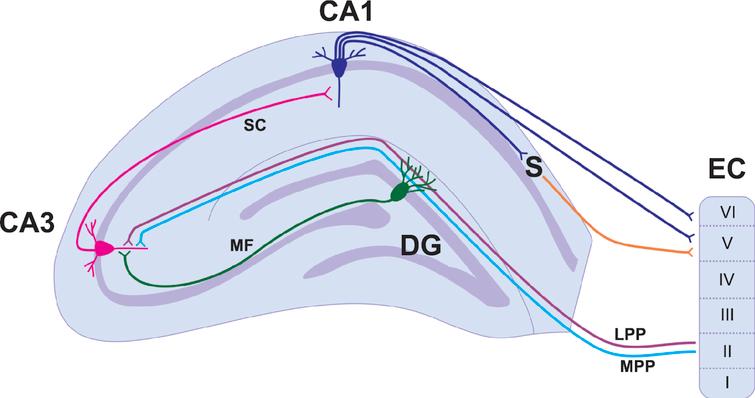
Hippocampal circuitry (DG = dentate gyrus, site of neurogenesis)
LEARN MORE: Anatomy of the hippocampal formation
LEARN MORE: Human hippocampal neurogenesis drops sharply in children to undetectable levels in adults
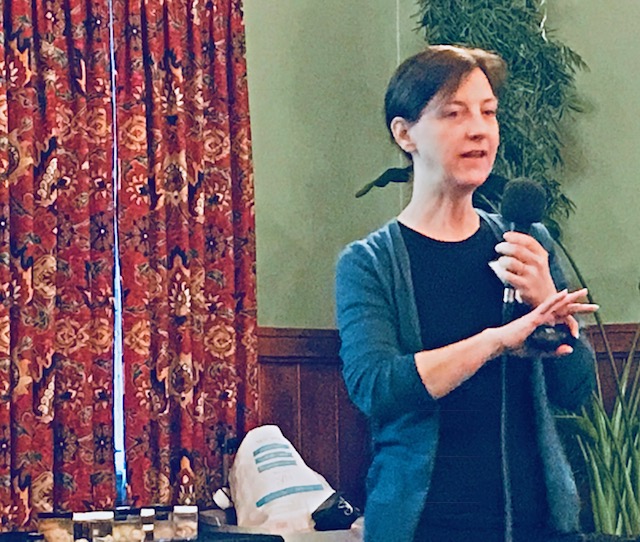
“This is, of course, not good news for those of us who claim to study adult neurogenesis,” said Heather. Yet she was not convinced that this one paper proved anything definitive. For one thing, she noted, it’s a negative study, and “it’s hard to prove a negative.”
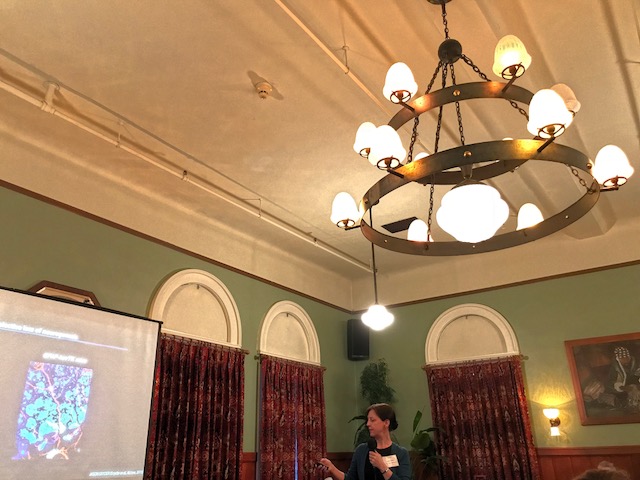
It’s also a post-mortem study. Researchers measure a specific protein expressed by neuronal precursor cells and immature neurons to assess neurogenesis, and this protein (known as doublecortin, or DCX) apparently degenerates quickly, within 3 hours of death. The authors of this paper examined brains up to 48 hours after death, so perhaps their marker was gone by the time they checked.
LEARN MORE: Doublecortin expression levels in adult brain reflect neurogenesis
There are also many well-researched papers (including her own) supporting neurogenesis in human adults…
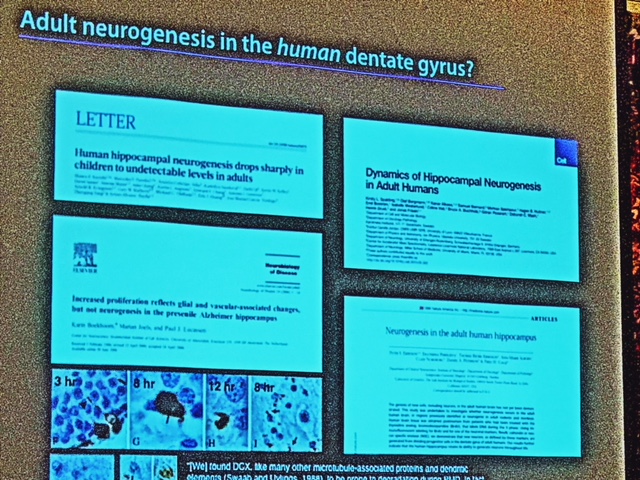
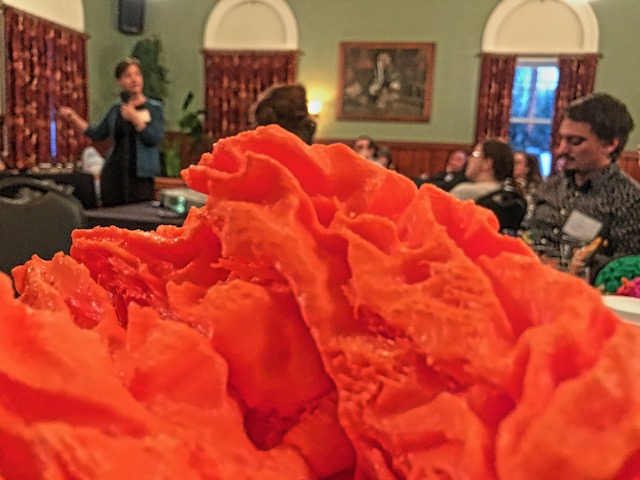
LEARN MORE: Neurogenesis in the Adult Brain
Dr. Cameron proceeded to describe fascinating work involving transgenic mice and rats that do not generate new neurons in the dentate gyrus. Using these rodent models, researchers have discovered that performance on hippocampally dependent memory tasks like the Morris water maze remains fine…
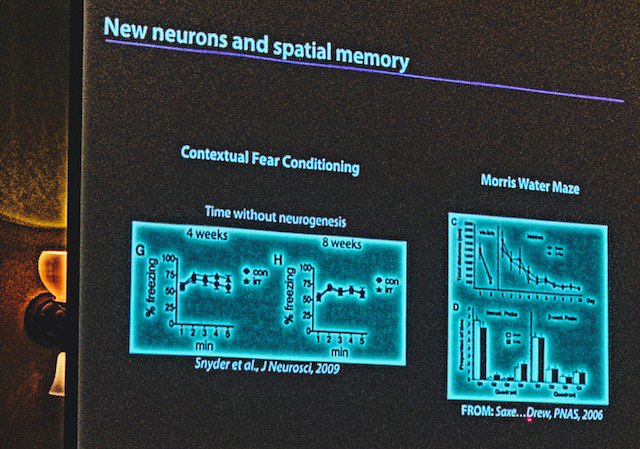
LEARN MORE: A Transgenic Rat for Specifically Inhibiting Adult Neurogenesis
LEARN MORE: Adult Neurogenesis: Beyond Learning and Memory
However, neurogenesis-deficient animals do not recover quickly from stress. Stress hormones (including corticosterone in rodents, cortisol in humans) rise in stressful situations (like being involuntarily restrained), and this is not unusual; however, the CORT levels of these transgenic rodents remains high and does not return to baseline…
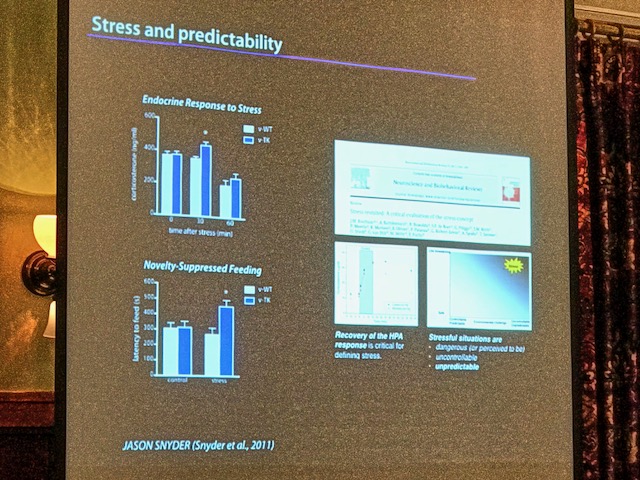
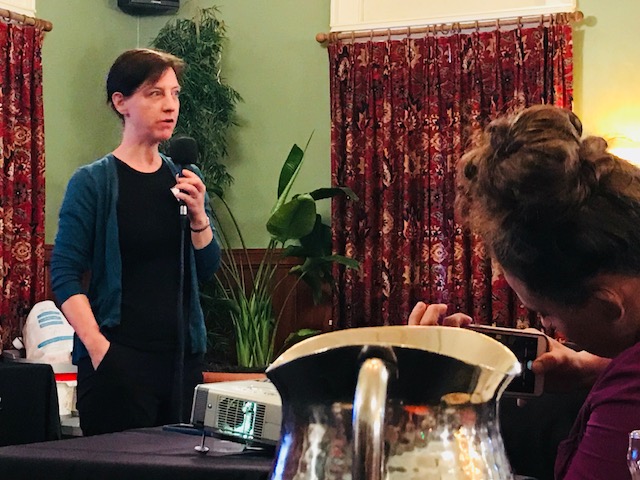
LEARN MORE: Adult hippocampal neurogenesis buffers stress responses and depressive behavior
Neurogenesis also alters behavioral responses to ambiguous stimuli (for example, a cue that predicts a mild shock ~50% of the time). Normal intact animals change their responses based on previous experience with these stimuli. Yet those without neurogenesis did not change their behavior based on new information regarding predictability of threat…
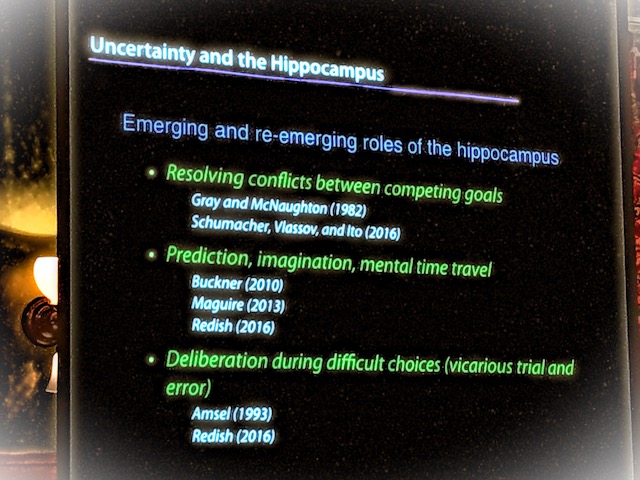
Her transgenic rodents also worked significantly less for lower value rewards, while animals with normal neurogenesis were willing to do comparatively more. “Is a lack of neurogenesis a model for depression related apathy?” asked Dr. Cameron.

LEARN MORE: Behavioral and Structural Adaptations to Stress


This was a compelling day of new research on neuropsychiatric disorders and the brain. Many thanks to Kate Stout of the OHSU Brain Institute for organizing another popular Chapter meeting for SfN!

Photo above by Noggin volunteer Jordan Ray
POSTER: NW NOGGIN
The art of neuroscience: creating networks for innovative engagement at sfn, schools, local communities & congress

GRIESAR, W.S.*, LEAKE, J.*
“All outstanding work, in art as well as in science, results from immense zeal applied to a great idea.” – Santiago Ramon y Cajal
Science needs investment, and engaging people builds support for research and education. Integrating arts in STEM (“STEAM”) fosters innovative engagement. We excited thousands of K-12 students, scientists, policy makers and the public about research and art during the 2017 Society for Neuroscience conference in Washington, DC.

LEARN MORE: From classrooms to Congress!
Nonprofit NW Noggin (nwnoggin.org) organizes undergraduates and graduates to collaborate and engage, building networks and inspiring academic priority students and the public about discovery in neuroscience and art. Volunteers leave classrooms and labs, and benefit from connecting across disciplines and institutions, serving as “near peer” role models, gaining skill explaining work and thinking creatively about careers. We’ve met with over 20,000 K-12 students since 2012!

LEARN MORE: Noggin Bloggin
In fall of 2017, 21 Noggin volunteers attended the Society for Neuroscience conference in DC. SfN provided complimentary registration, the Portland State University Neuroscience Club and NIH BUILD EXITO funded outreach supplies and travel for 8 PSU participants, while OHSU covered travel for their 5. The remaining 8 (4 from PSU, 4 from WSU) were supported by NW Noggin, along with housing for all 21, partly through money raised at Noggin Fest, a student-run celebration of research, music and art at Portland’s Alberta Rose Theater.

LEARN MORE: Noggin Fest 2017!
During a week in DC, in partnership with the American Brain Coalition, SfN, and the Phillips Collection, we worked with 750 students at Turner Elementary and Sidwell Friends. We staffed a popular “Art of Neuroscience” booth at SfN, and presented our volunteers, research, and evidence of outreach effectiveness to the U.S. House Neuroscience and STEAM caucuses at a “Noggin Briefing with Brains, Art & Ice Cream,” as we did previously in 2016. Three of the four caucus co-chairs represent Northwest districts we’ve visited before. At the briefing, co-sponsored by PSU, OHSU, the p:ear homeless youth center and the Portland Art Museum, we examined human cerebrums, discussed research, and crafted pipe cleaner neurons with two House members and more than 80 Congressional staff.

Building excitement and awareness of discoveries in neuroscience through arts-integrated outreach across institutional, state, federal and generational lines trains diverse new scientists to collaborate and communicate, and increases awareness and support for further investment in brain research and the arts.

Department of Psychology, Portland State University; NW Noggin (nwnoggin.org)


